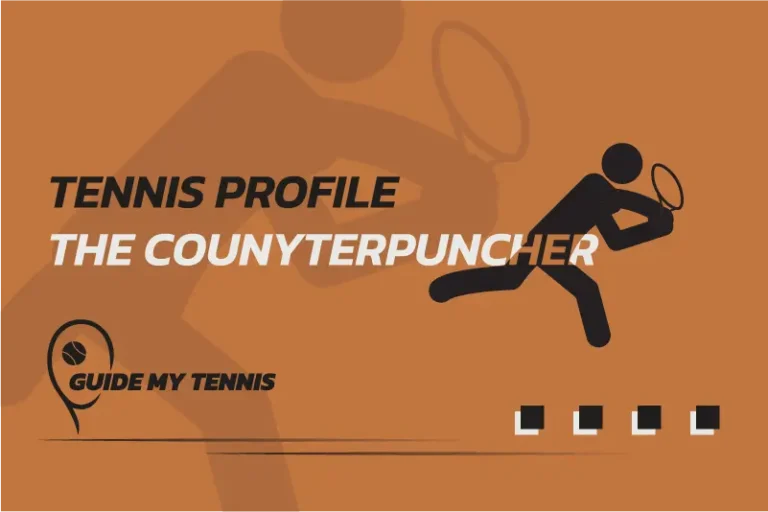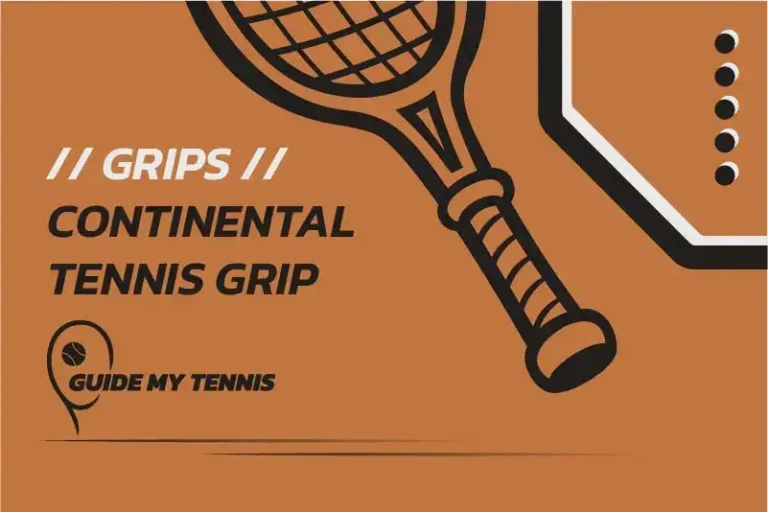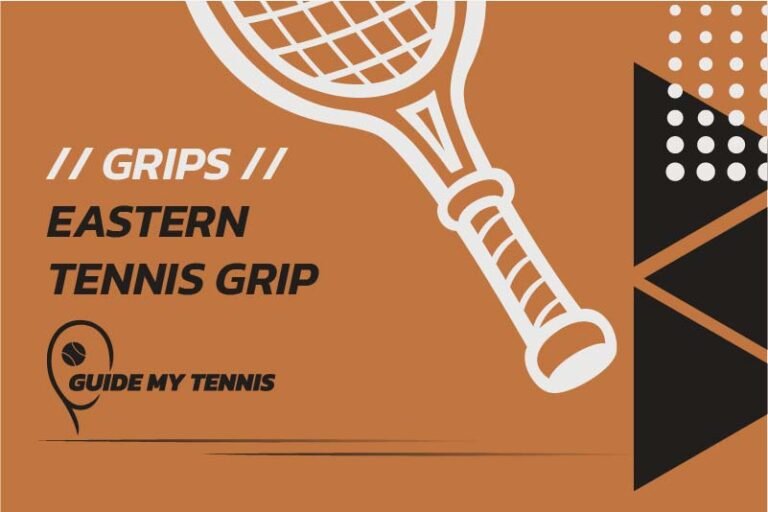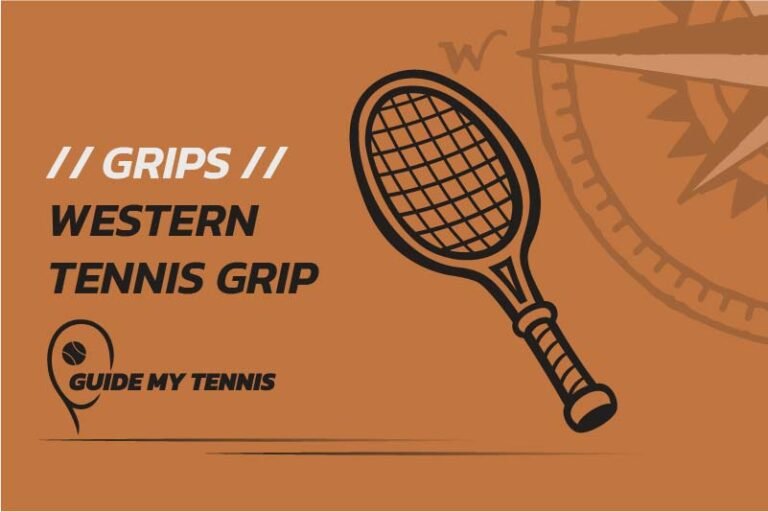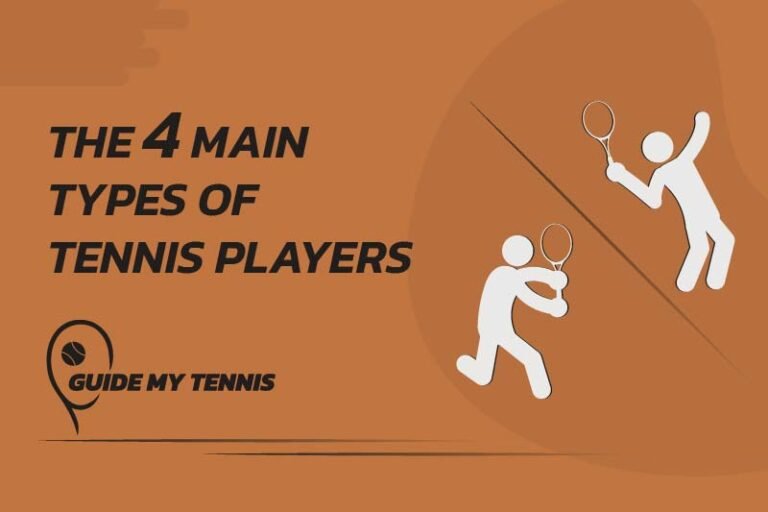Learn About The Basics of the Tennis Scoring System
Have you ever heard that you should never date a tennis player, because “love” means nothing to us? Well, to some extent, this is true, but we still believe in love. Right? Tennis is a sport where “love” means zero, and the scoring system is different for games, sets and matches. For newcomers, watching a…
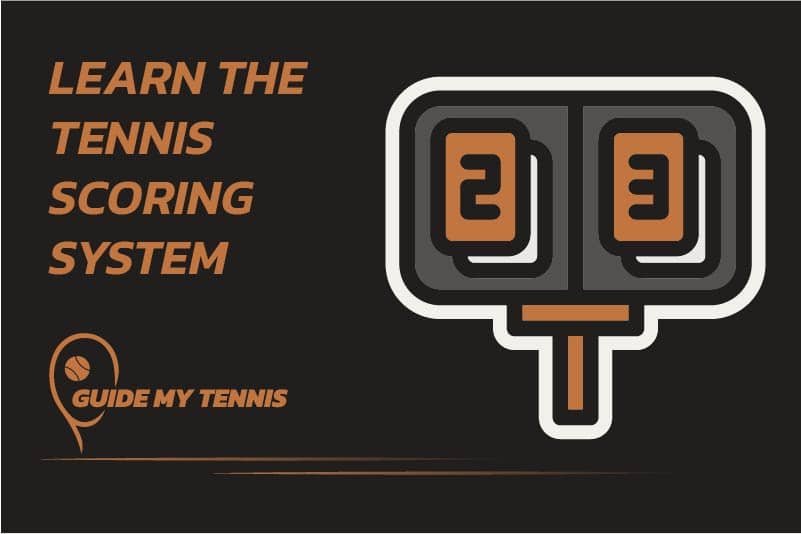
Have you ever heard that you should never date a tennis player, because “love” means nothing to us? Well, to some extent, this is true, but we still believe in love. Right? Tennis is a sport where “love” means zero, and the scoring system is different for games, sets and matches. For newcomers, watching a match on TV without knowing how the scoring system works can be a nightmare. But worry not, Guide My Tennis has got your back with this detailed guide on the tennis scoring system!
I have carefully crafted this guide in order to teach you the basics of how the score works and the different rules that follow certain scenarios. Be aware that I will also be using some tennis jargon that you might not be familiar with. But this is a beginner’s guide to the tennis scoring system, so I will explain everything in detail.
The Basics of Tennis
Tennis is a sport that is played on a rectangular court. The court can have different types of surfaces, with the most popular being hard, clay and grass. Whether playing at a beginner level or advanced, the game can be played in two main formats: singles, where one player competes against another, or doubles, where two players team up against another pair. Players stand on opposite sides of the net and use a stringed racquet to hit the ball back and forth, aiming to outplay their opponent by landing the ball within the court boundaries. If you want to learn more about the tennis racket, I highly recommend reading this.
Gameplay
Play starts with a serve, where the player must serve diagonally from behind the baseline and into the service box of the opposing side. The ball has to bounce once in the correct service box before the opponent hits the ball back. After the opponent returns the ball over the net, as long as it does not go into the net or outside the court boundaries, each player, or team in doubles, can let the ball bounce only once on their side before returning it.
Players can also choose to hit the ball before it bounces. This is known as a volley and is a common practice when players find themselves at the net. If a player fails to return the ball, hits it out of play, into the net, or lets it bounce more than once, the opponent wins the point. In singles, the ball must land within the singles court, while in doubles, the wider doubles court is used.
It is important to keep in mind that the main aim of tennis is to win enough points, which will allow you to win a game, enough games that allow you to win a set, and enough sets to win the match. This is critical for you to know when watching tennis, and it is also important as it is the basis of the tennis scoring system.
Therefore, the order of progression is points → games → sets → match.
Starting the Match with a Warm-Up Ritual
Before diving into the tennis scoring system, let’s talk about the pre-match ritual, i.e. what happens before the first point is played. Typically, the pre-match ritual begins with the players warming up by hitting a few balls back and forth to each other, to prepare mentally, loosen up and get a better feel of the court. In professional matches, this warm-up is limited to about five minutes.
The players then decide who will start serving and which side of the court each player will start on. To decide this, either player usually spins their racquet (or a coin is tossed), and the winner of the spin will have some options to choose from. They can choose one of these 3 options:
- To serve or receive first
- The side of the court to start on
- Or defer their choice to their opponent (note: the opponent cannot defer back)
Once the winner of the toss chooses one of the options above, the opponent has the remaining choice.
At the professional level (ATP/WTA), this process is conducted by the umpire, who oversees the coin toss before warm-up begins. Interestingly, players often make their choices based on tactical factors—like sun position, wind direction, or personal serving preference. A simple decision at the start can shape the early momentum of the match.
The Tennis Scoring System: Scoring a Game
The Points System
Tennis has a unique point system compared to most other sports. Before we go into detail, here is your guide to scoring a game:
- 0 points = Love
- 1 point = 15
- 2 points= 30
- 3 points= 40
- 40-40 = Deuce
- Server wins deuce point = Advantage-In
- Receiver wins deuce point = Advantage-Out
How Does One Win a Game in Tennis?
In order to win a game in tennis, a player must win at least four points and be ahead by a margin of two. So, if you reach 40 points and win the next point, while your opponent has 30, 15 or love, you win the game. For example, if the score is 40–30 and you win the next point, the game is yours. If the score is tied in a game or set, you use the term “all” when announcing the score. For example, if you and your opponent have both won two points in the game, the score would be 30-all.
Understanding these scoring terms and how they build into games and sets is crucial for following the flow and momentum of a tennis match. And remember, winning a game does not equal to winning a match in tennis.
What is a Deuce?
When the score is tied at 40 (i.e. 40 – 40), we no longer say 40-all; we say deuce instead. This is a critical point in the game where a player must pull ahead by two points to win the game. If players reach a deuce score, a player must win two consecutive points to win the game: the first point gives them the advantage and winning the next point wins them the game. If they lose that advantage point, the score returns to deuce, and this can repeat several times. Trust me, this process can be repeated so many time, that at some point you’d feel like giving up, but don’t you ever do that!
Why do Tennis Players Switch Sides?
In singles and doubles matches, players or teams switch sides of the court in odd games. This means that after the first game is complete, they switch sides, as well as every other two games after that. This change of ends is very often referred to as the changeover. In professional tennis, the changeover lasts 90 seconds. This is extended to 120 seconds after a set is concluded.
This pause helps ensure fairness by minimising the effects of external conditions like sun glare, wind, or court surface inconsistencies, which can impact play. Side changes are also an opportunity for players to rest, both physically and mentally. This time allows them to focus on the games to come.
What is a Set in Tennis?
In essence, a set is just a collection of games. Simple, right? But in tennis, we don’t like simple – in fact, we have different types of sets.
Advantage Set
In an advantage set, a player or team needs to win six games by at least two, to win the set (e.g., 6–4). If the score reaches 6-6, play continues until a player wins by 2 two games, such as 8–6, 9–7, 10–8, etc. No tiebreaker is played at 6–6 (except in some rare rule exceptions or modified formats). This type of game was phased out due to extremely long matches, player fatigue, scheduling chaos, and viewer fatigue. Most tournaments have switched to a tiebreak set format instead of advantage sets.
In 2010, Wimbledon witnessed the longest tennis match ever recorded. It was a true exhibition of tennis athletoicism and perseverance by both players. John Isner and Nicolas Mahut played a first round match that lasted 665 minutes, equalling to 11 hours and 5 minutes, spanning over 3 days. The match ended in Isner’s favour, with a massive score of 6-4, 3-6, 6-7, 7-6, 70-68. You can read more about this match here.
Tiebreak Set
In a tiebreak set, a player or team needs to win six games to win a set. If the score gets to 5-5 (5-all), one player must win the next two games to win the set. If the score reaches 6-6 (6-all) in the set, a tiebreak game is played.
Keeping Count of a Tiebreak Score
In a tiebreak game, the next person who was due to serve will start the tiebreak game, and serve one point to the deuce side of the court. The following two points will then be served by the opponent starting on the ad side. In doubles, the player on the opposing team due to serve will serve these points.
Players or teams switch ends of the court every six points (e.g. when the score is 4-2), and to score this tiebreak game, you use, “zero” “one”, “two”, “three”, etc. The first player or team to win seven points, by two, wins the tiebreak. This means the score can end up being very high (e.g. 15-13) or as low as 7-0 through 7-5.
Whoever wins the tiebreak game, wins the set by a score of 7-6.
Serving After a Tiebreak Set
Since the set is an odd-numbered score (7-6), whichever end of the court the players or teams ended up on when the tiebreak game finished, they will need to switch sides to start the next set. Whoever started serving the tiebreak game will be receiving serve in the first game of the next set.
How Does One Win a Match in Tennis?
The most common format used to play a tennis match is best-of-three tiebreak sets. This means that if you don’t win the first two sets, the third set will decide the match! This format is used by the majority of tournaments across the globe, including those sanctioned by the International Tennis Federation (ITF), tournaments that form part of the ATP and WTA, and more!
There is an exception, though. If you didn’t know, the world of tennis witnesses many tournaments throughout the year, but 4 prestigious titles are considered as Grand Slams. In such tournaments, the men play matches with best out of 5 sets. So yes, if you’re out of breath by the end of 3 sets, you’re gonna be in trouble if you find yourself battling a top seed, 5 hours in a 5-set thriller.
In March of 2022, the four Grand Slams (Roland Garros, Wimbledon, US Open, Australian Open) announced that they’ll be transitioning to a consistent, final-set tiebreak format. When a match reaches 6-6 in the deciding set at these events, a 10-point tiebreak will be played. The first player or team to win 10 points, with an advantage of two or more points, will be the winner. This format was already being used in the Australian Open since 2019; however, this format was officially extended to all Grand Slams in early 2022.
Do You Know Who Invented the Tennis Scoring System?
If you say no, it’s okay. The reality is, the tennis scoring system is a complex set of rules that no one really knows their source of origin. Crazy, right? But there are clues.
One theory suggests that the scoring system is based on the face of the clock. Since you need to win 4 points to win a game, 4 quarters make up a circle… Every point moved the circle by 15 minutes. Some say that the 3rd point, 45, became 40, to make it easier. However, this theory is debunked by many experts. The reason is that tennis was invented and played long before clock faces!
Another theory is that tennis came as a product of a long-lost French game. This game was called Jeu de Paume, and it translates to The Game of the Palm. The game was played on courts with a length of around 45 feet. For every point, the players moved up into the court. After winning the first point, the player moves up 15 feet, another 15 after winning the second point and another 10 after the third point. This totalled to 40, hence the 15,30,40 score. Unfortunately, we have no concrete evidence pointing to this, just speculations, but it makes sense, right?
So yes, the tennis scoring system and its origin will continue to baffle us for the time being. But it’s okay, we can still enjoy it!
I’ve Learned About the Tennis Scoring System – What’s Next For Me?
Well, firstly, well done! You can now go and start watching tennis confidently. Here’s how you can keep up with all the live action of tennis matches that are scheduled for the day.
If you’re looking to learn more about the history of the tennis racket, or maybe you’re looking to start playing tennis and need ot buy some equipment, I have the perfect resource for you – A guide on choosing your next tennis racket.

